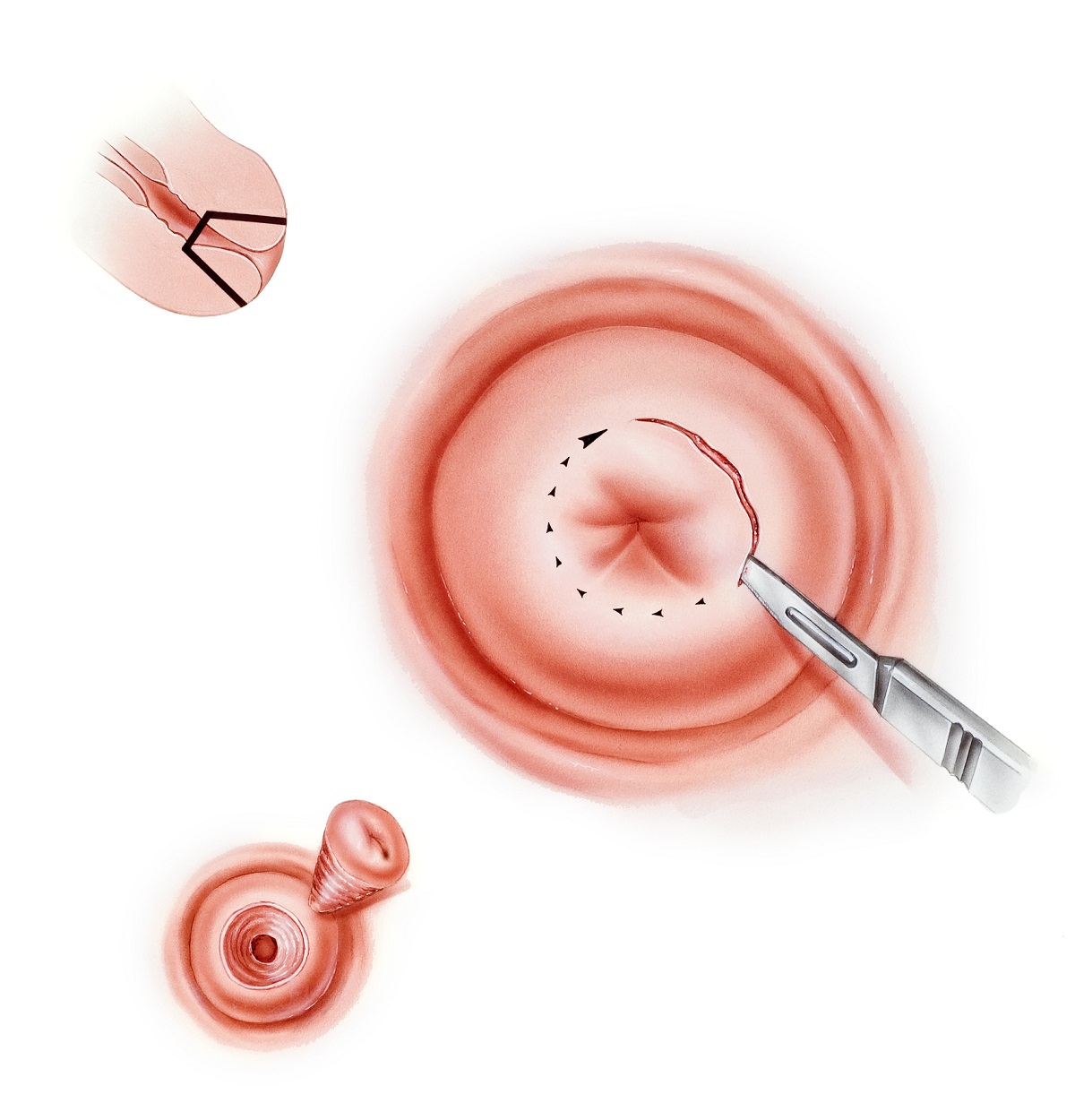Treatment of cervical cancer: conization chemotherapy and other methods.
To administer the most appropriate treatment, it is essential to accurately determine the stage of the disease.
For abnormal changes on the cervix that can later lead to cancer, cervical conization is performed to remove the abnormal cells on the cervix.
Types of conization
- Laser – Removal of the altered tissue using a laser.
- LEEP method (loop electrosurgical excision procedure) – Excision with a high-frequency electric loop using a small hot loop removes the altered tissue. Especially suitable method of conization for women who are still planning pregnancy.
- Conization with a scalpel – It is performed when the tissue above the uterine canal is affected.
- Cryotherapy – It is performed only in exceptional cases, as it requires longer healing. It is performed by freezing the changed tissue and its subsequent removal.

Treatment depends on the size, location and stage of the tumour.
The mainstay of treatment is surgical removal of the cancer at an early stage.
Advanced stage disease is treated with chemoradiotherapy, chemotherapy, radiotherapy or targeted therapy.
At a higher stage, women undergo surgery to remove the cancer. A hysterectomy (removal of the uterus) is performed and some pelvic lymph nodes may be removed at the same time.
If recurrence of cancer is suspected after surgery, adjuvant chemoradiotherapy is administered.
To preserve a woman's fertility, a trachelectomy (removal of the cervix) is performed.
Locally advanced cervical cancer is usually treated with cisplatin-based chemoradiotherapy.
Neoadjuvant chemotherapy is given to shrink the tumor and perform subsequent surgery.
Carcinoma with metastases
It is usually treated with chemotherapy in combination with targeted therapy.
Palliative radiotherapy is given to treat symptoms arising from metastases.
If the tumour returns to one site in the pelvis, radiotherapy is given or pelvic exenteration is performed (surgically removing the sphincter, vagina, uterus, ovaries and fallopian tubes).
Recurrent tumours located in distant organs are treated with chemotherapy with or without targeted therapy.
After treatment, regular check-ups are carried out every 3-6 months for the first two years, every 6-12 months for the next three years and once a year after 5 years.
At each visit to the gynaecologist, you will have a gynaecological examination, and the doctor will also recommend a CT scan or a PET/CT positron emission tomography scan.










